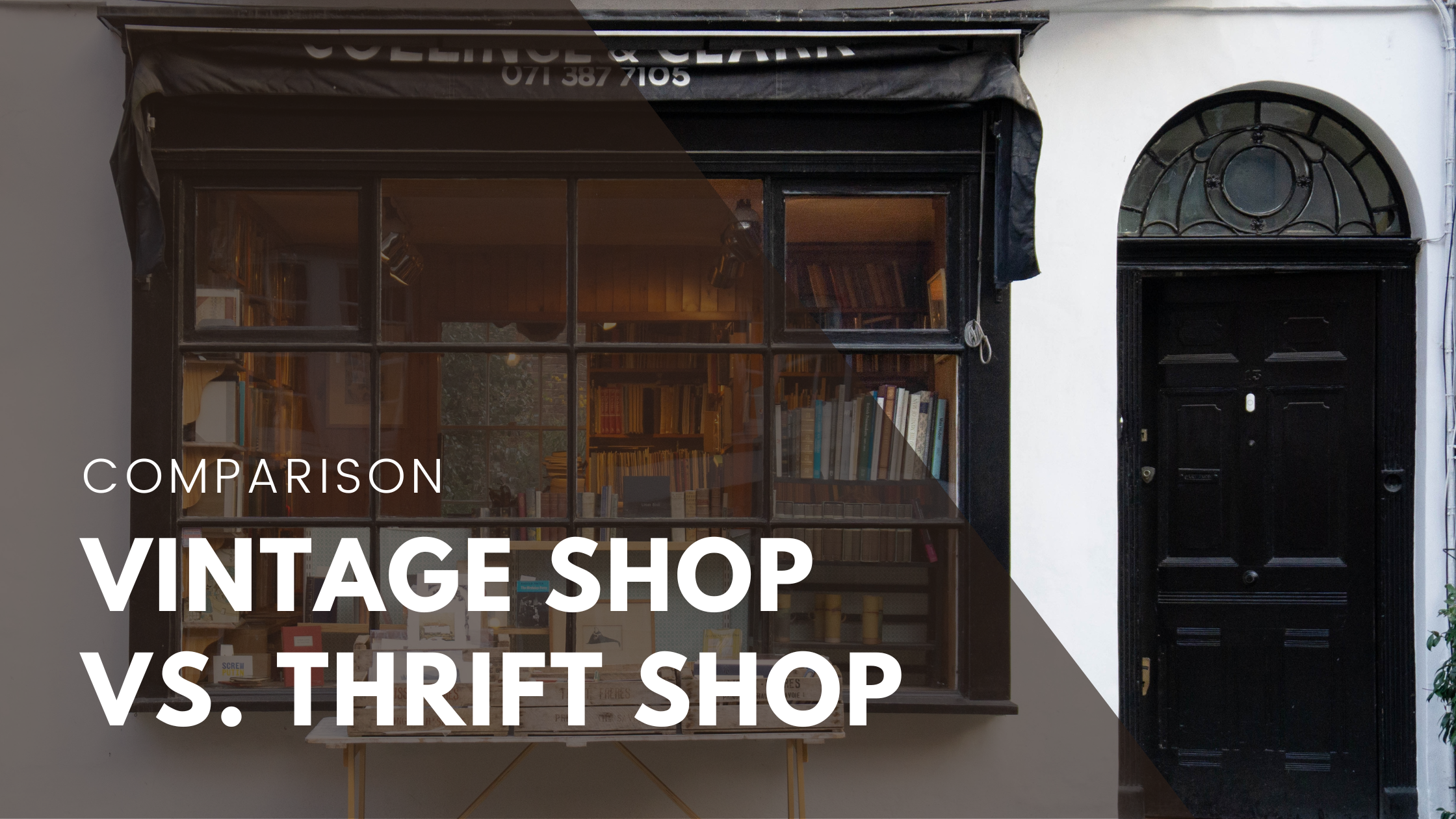Vintage vs. Thrift: Understanding the Difference in Shopping Secondhand
Photo by Sean Ferigan on Unsplash
Secondhand shopping has become increasingly popular in recent years, with more and more people opting for sustainable and eco-friendly alternatives to traditional retail. However, not all secondhand stores are created equally, and it's essential to understand their differences to find the best deals and unique items. Two of the most common types of secondhand stores are vintage shops and thrift shops. Still, many people use these terms interchangeably and need to realize that there are some critical differences between them. In this post, we'll look closer at what separates vintage and thrift shops, so you can shop smarter and find the best secondhand treasures.
Vintage Shop vs. Thrift Shop
A vintage shop is a retail store that sells high-quality and fashionable items from a particular era or period, typically from the 1920s to the 1980s. These items are commonly used but carefully selected based on their unique and authentic qualities.
On the other hand, a thrift shop is a store that sells secondhand items that have been donated, typically by individuals. These items can range from clothing to household items, often sold at very low prices. The items sold in thrift stores are usually not curated or selected based on age or style, and there is a wide range of quality.
The main difference between a vintage shop and a thrift shop is the focus on the items being sold. Vintage shops specialize in carefully selected, unique, and high-quality items from a particular era, while thrift shops offer a wide range of secondhand items, often at very low prices. Additionally, vintage shops usually have a more curated and stylish atmosphere, while thrift shops can be more utilitarian and less focused on aesthetics.
Where to Find Vintage Shops
It's challenging to determine how many vintage shops there are in the USA, as the number can vary greatly depending on how one defines a vintage shop. However, according to a report by IBISWorld, there were approximately 6,800 vintage and retro stores in the United States in 2021. This includes both physical brick-and-mortar stores and online shops.
Vintage shops are more prevalent in some country regions, particularly in larger cities with a strong fashion and arts scene. For example, cities like New York, Los Angeles, San Francisco, and Portland are known for their many vintage shops. However, vintage shops can be found nationwide in many other cities and towns. Their popularity is growing as more people become interested in sustainable, eco-friendly shopping options.
In addition to standalone vintage shops, many antique malls and flea markets also have vintage sections or vendors specializing in vintage items. Online marketplaces such as Etsy and Depop have also become popular platforms for buying and selling vintage items.
What is a Consignment Shop?
A consignment shop is a retail store that sells used or secondhand items on behalf of the original owners, who are called consignors. The consignors bring their items to the shop, and the shop owner agrees to sell them on a consignment basis. This means that the shop owner will display the items and sell them on behalf of the consignor, and the consignor will receive a percentage of the sale price, typically around 40-60%.
Consignment shops can sell a wide range of items, including clothing, accessories, home decor, furniture, and more. The items sold in consignment shops are usually of higher quality than those found in thrift shops, as they are often gently used and well-maintained. Many consignment shops also have strict guidelines for the types of items they will accept, ensuring that only high-quality and desirable things are sold in the store.
In addition to offering a way for individuals to sell their used items and earn some extra money, consignment shops are also popular among shoppers looking for unique and high-quality items at a lower price than they would find in a traditional retail store. Consignment shops can be an excellent option for those who are looking for sustainable and eco-friendly shopping alternatives.
A consignment shop can also be a vintage shop. Many consignment shops specialize in selling high-quality vintage items on behalf of consignors. These shops often have a carefully curated selection of vintage clothing, accessories, and home decor items from a particular era.
The main difference between a consignment shop specializing in vintage items and a traditional vintage shop is how the items are sourced. In a conventional vintage shop, the owner is responsible for sourcing the items and building a collection based on their tastes and preferences. They may purchase items at estate sales, auctions, or other secondhand sources and carefully select each piece to ensure that it meets their standards for quality and authenticity.
While there are some differences between consignment shops and traditional vintage shops, they both offer unique and high-quality items that can be difficult to find elsewhere. Whether you're looking for a vintage Chanel handbag or a mid-century modern armchair, a consignment shop specializing in vintage items can be a great place to start your search.
Benefits of Shopping Secondhand
Cost savings: One of the most obvious benefits of shopping secondhand is cost savings. Secondhand items are typically much cheaper than new items, making them an affordable option for those on a budget.
Unique finds: Secondhand shops often offer a diverse range of unique items you won't find in traditional retail stores. From vintage clothing to one-of-a-kind home decor pieces, you will find something that stands out and reflects your style.
Sustainable shopping: Secondhand shopping is a great way to reduce waste and minimize environmental impact. By giving new life to items that might otherwise end up in a landfill, you're helping to conserve resources and reduce pollution.
Quality items: Many secondhand items are high-quality and have stood the test of time. Vintage clothing and furniture, for example, are often made from durable materials and have already lasted for decades.
Supporting local businesses: Shopping at secondhand stores supports small businesses and helps keep money in the local community.
Overall, shopping secondhand, whether at a thrift, vintage, or consignment shop, is a great way to save money, find unique items, and support sustainable and ethical shopping practices.






